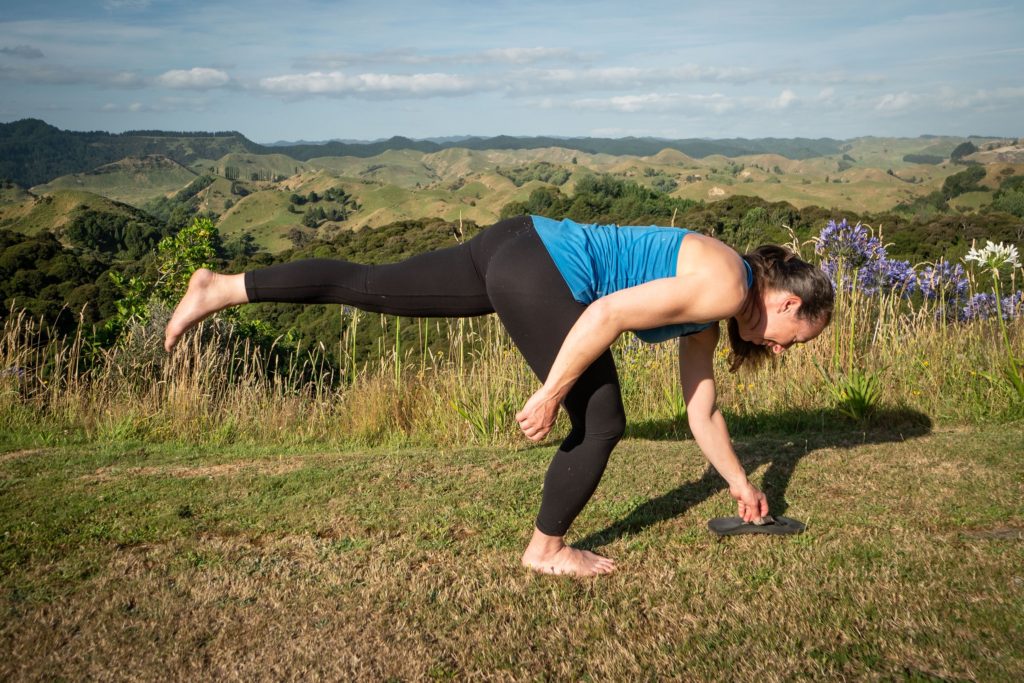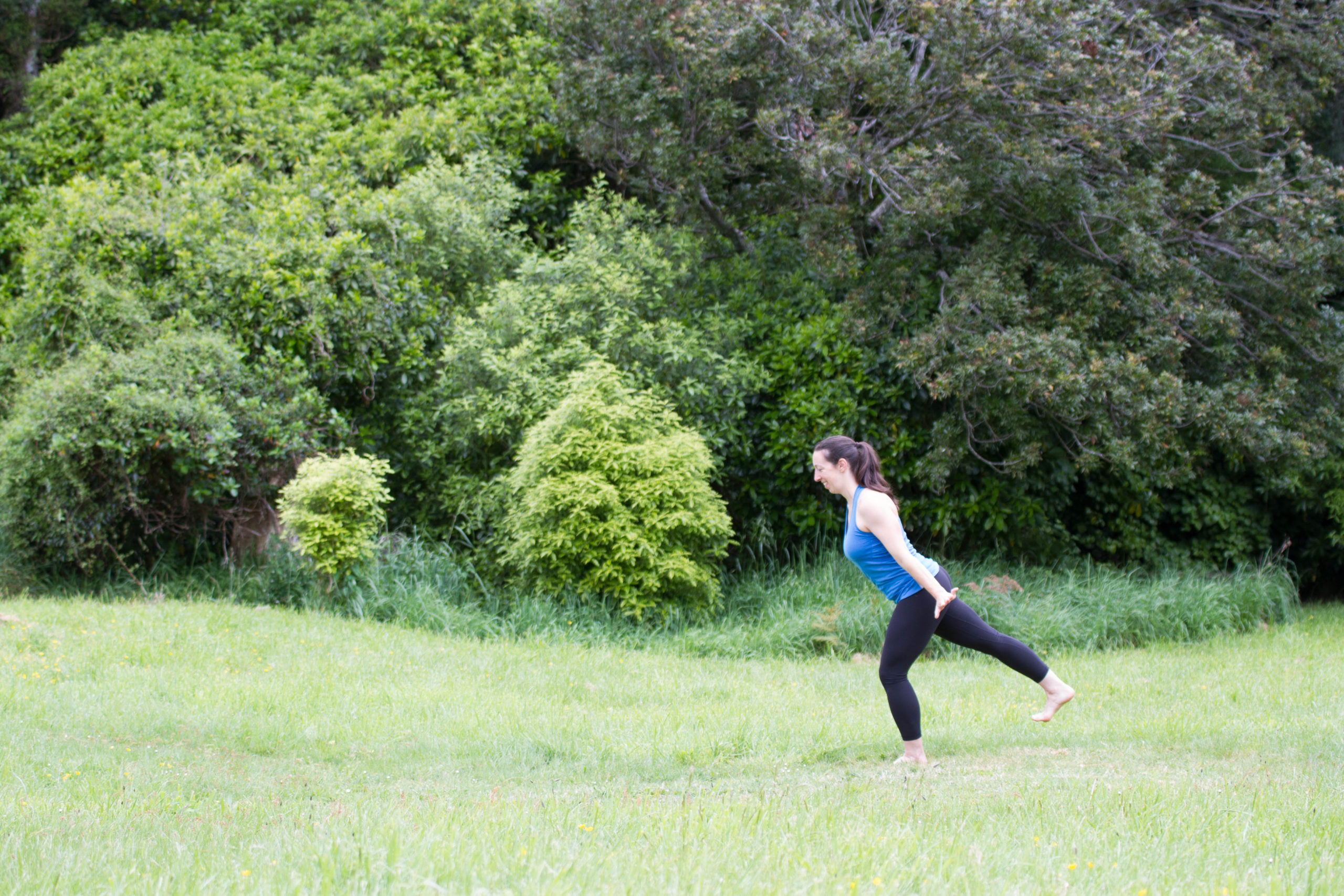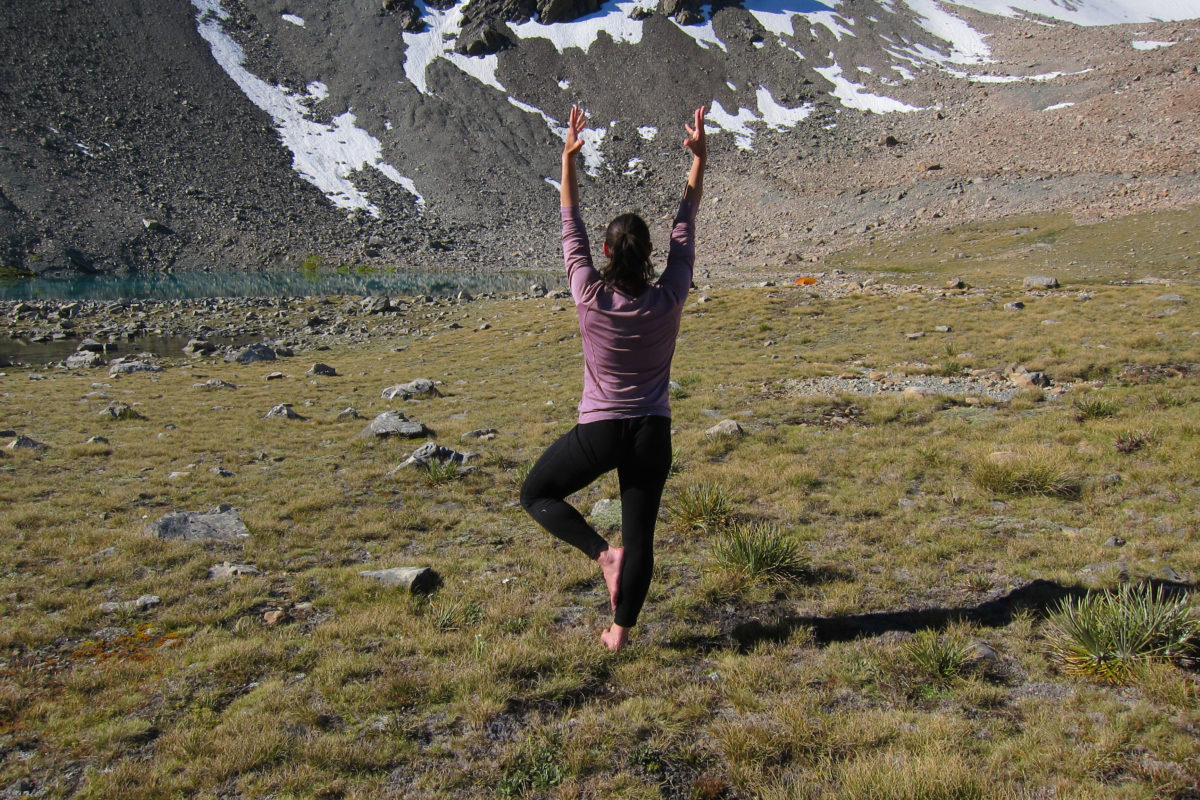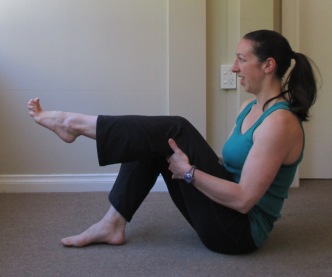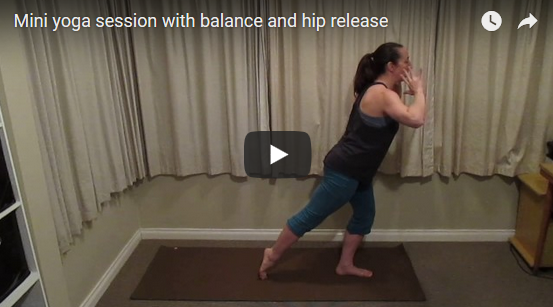If you are a regular reader of my blog you’ll know I LOVE anything with balancing on one leg – it’s good for balance (obviously), proprioception, body awareness and building strength in the smaller muscles of the feet, legs and hips. It also offers a way to have fun and be challenged, but safely with lower risk of injury. To name just a few benefits!
I also like blending asanas (yoga poses) with movement including other forms of movement practice and training. One of the most practical examples of this comes from Maria Kirsten of Yoga for Grownups in Australia. In one of my teacher trainings she introduced a simple exercise she uses to teach moving in and out of balance that draws on the real life example of having to put your shoes on at the beach. When you’re at the beach, it’s a challenge to keep the sand off your feet and socks while you try to put your shoes on without sitting down.
Her full version of this practice starts from standing and involves (you can pretend to have sand, socks and shoes):
- Lifting your foot to dust the sand off your foot (at which point you can’t touch this foot to the ground again)! Then lifting your chest up to regain your balance.
- Reaching down to pick up your sock from the ground (remember don’t let that foot touch the ground or it will get sandy). Then lift your chest to regain your balance.
- Putting your sock on your foot while balancing on one leg.
- Reaching down to pick up your shoe from the ground. Then lift your chest to regain your balance.
- Putting your shoe on your foot while still balancing on one leg. Then tying your shoe.
- Then you can put your foot down and do it all over again on the other side.
There are two key tips here to help with the balance. First, pick a spot on the ground about 1-2 metres in front of you and keep your focus on that spot, especially when you move forward and back.
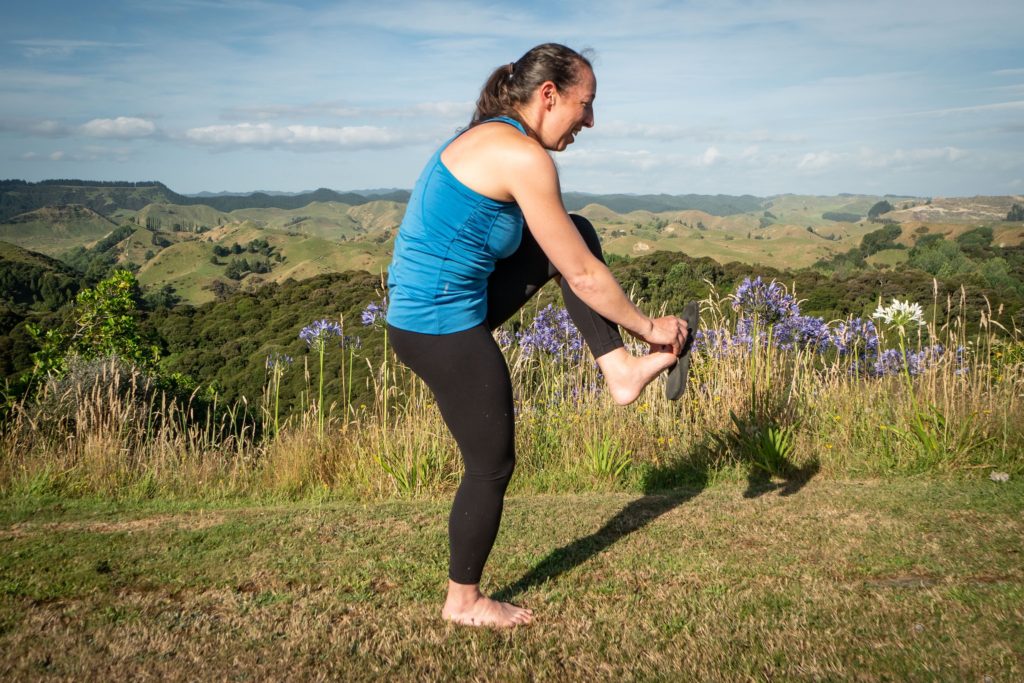
Second, when you reach down to the ground and come back up, use the leg you have lifted off the ground as a lever to move your upper body. I’ve written about this leveraging action before and I explain it at the start of this mini-class video.
